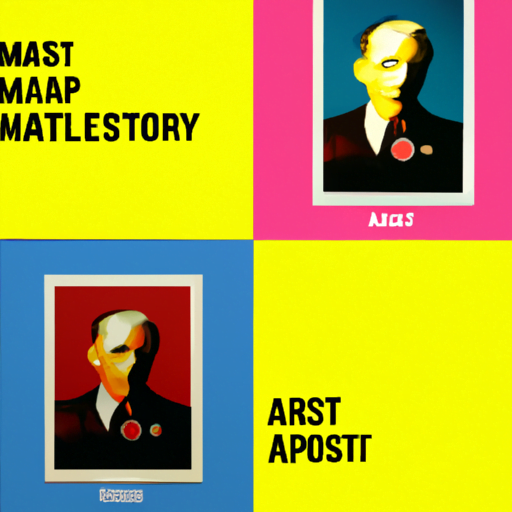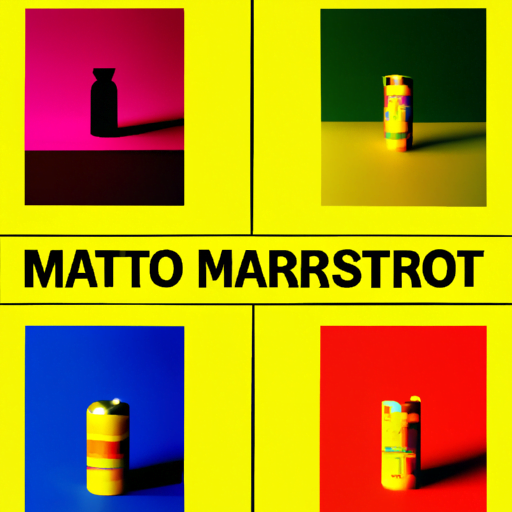
-
Table of Contents
- Mastering the Art of Poster Design
- The Importance of Poster Design
- Understanding the Target Audience
- Key Elements of Poster Design
- 1. Clear Hierarchy
- 2. Eye-Catching Visuals
- 3. Engaging Typography
- 4. Color Palette
- 5. White Space
- 6. Call to Action
- Case Studies: Successful Poster Designs
- 1. The National Parks Poster Series
- 2. The AIDS Awareness Poster Campaign
- Summary
Mastering the Art of Poster Design

Posters are a powerful medium for communication, capable of capturing attention and conveying messages in a visually appealing way. Whether you are promoting an event, advertising a product, or raising awareness for a cause, mastering the art of poster design is essential to create impactful and effective designs. In this article, we will explore the key elements of successful poster design, provide valuable insights, and showcase examples and case studies to inspire your own creations.
The Importance of Poster Design
Posters have been used for centuries to inform, persuade, and entertain. They are a versatile form of visual communication that can reach a wide audience and leave a lasting impression. Here are some reasons why poster design is important:
- Attention-Grabbing: Posters have the ability to capture attention quickly due to their large size and eye-catching visuals.
- Memorable: A well-designed poster can leave a lasting impression on viewers, making it more likely that they will remember the message.
- Cost-Effective: Compared to other forms of advertising, posters are relatively inexpensive to produce and distribute.
- Wide Reach: Posters can be displayed in various locations, such as streets, schools, and community centers, allowing you to reach a diverse audience.
- Brand Building: Consistent and well-designed posters can help build brand recognition and establish a strong visual identity.
Understanding the Target Audience
Before diving into the design process, it is crucial to understand your target audience. Knowing who you are designing for will help you create a poster that resonates with them and effectively communicates your message. Consider the following factors:
- Demographics: Age, gender, location, and cultural background can influence the design choices you make.
- Interests and Preferences: Understanding the interests and preferences of your target audience will help you tailor the design to their tastes.
- Goals and Motivations: Identify the goals and motivations of your audience to create a poster that appeals to their desires and aspirations.
For example, if you are designing a poster to promote a music festival targeting young adults, you may use vibrant colors, bold typography, and imagery that reflects the energy and excitement of the event.
Key Elements of Poster Design
Now that you have a clear understanding of your target audience, let’s explore the key elements of effective poster design:
1. Clear Hierarchy
A well-designed poster should have a clear hierarchy of information, guiding the viewer’s eyes from the most important elements to the least important. Use size, color, and typography to create visual cues that prioritize the essential information. For example, the event name and date should be more prominent than additional details.
2. Eye-Catching Visuals
Visuals play a crucial role in poster design. They should be attention-grabbing, relevant to the message, and visually appealing. Use high-quality images, illustrations, or graphics that evoke emotions and capture the essence of your message. Avoid cluttering the poster with too many visuals, as it can distract from the main message.
3. Engaging Typography
Typography is a powerful tool in poster design. Choose fonts that are legible, but also reflect the tone and personality of your message. Experiment with different font sizes, weights, and styles to create visual interest and hierarchy. Avoid using too many fonts, as it can create a chaotic and unprofessional look.
4. Color Palette
Colors evoke emotions and can greatly impact the effectiveness of a poster. Choose a color palette that aligns with your message and target audience. Consider the psychological associations of different colors. For example, warm colors like red and orange can create a sense of urgency or excitement, while cool colors like blue and green can evoke calmness or trust.
5. White Space
White space, also known as negative space, refers to the empty areas in a design. It helps create balance, improve readability, and draw attention to the important elements. Embrace white space in your poster design to avoid overcrowding and allow the message to breathe.
6. Call to Action
A call to action is a crucial element in poster design, as it tells the viewer what to do next. Whether it’s buying a ticket, visiting a website, or attending an event, make sure the call to action is clear, concise, and visually prominent. Use contrasting colors or typography to make it stand out.
Case Studies: Successful Poster Designs
Let’s take a look at some real-life examples of successful poster designs:
1. The National Parks Poster Series
The National Parks Poster Series, created by artist and designer Anderson Design Group, showcases stunning illustrations of various national parks in the United States. The posters use vibrant colors, detailed illustrations, and engaging typography to capture the beauty and essence of each park. The series has gained popularity and has been widely recognized for its exceptional design and ability to inspire people to explore the national parks.
2. The AIDS Awareness Poster Campaign
The AIDS Awareness Poster Campaign, launched by the United Nations in collaboration with various organizations, aimed to raise awareness about HIV/AIDS and promote safe practices. The posters used powerful visuals, such as broken hearts and shattered glass, to convey the devastating impact of the disease. The campaign successfully captured attention, educated the public, and encouraged individuals to take preventive measures.
Summary
Mastering the art of poster design requires a deep understanding of your target audience, a clear hierarchy of information, eye-catching visuals, engaging typography, a well-chosen color palette, effective use of white space, and a strong call to action. By incorporating these elements into your designs, you can create posters that capture attention, convey messages effectively, and leave a lasting impression on viewers. Remember to continuously experiment, learn from successful designs, and adapt your approach to different contexts. With practice and dedication, you can become a master of poster design and create impactful visuals that resonate with your audience.
